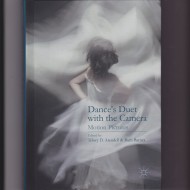
In 1975 Buckminster Fuller coined the term “tensegrity” by contacting two terms — tensional and integrity. Simply defined, tensegrity refers to “compression elements in a sea of tension.”
“Tensegrity structures,” cantilevered struts held together by strings, appear in photographic records of sculptures created by Rudolf Laban during his convalescence at Dartington Hall (1938-39). Of course, Laban was modeling Choreutic trace-forms. But he seems to have happened upon the concept of tensegrity, or more accurately, to have grasped intuitively today’s emerging models of the body as a biotensegrity structure.… Read More








